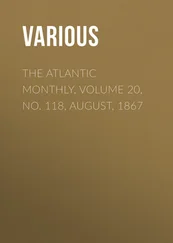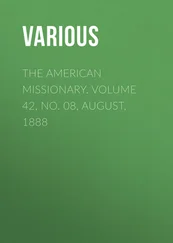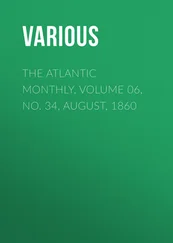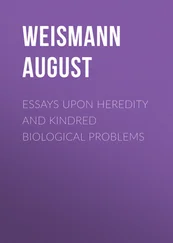August Weismann - Studies in the Theory of Descent, Volume I
Здесь есть возможность читать онлайн «August Weismann - Studies in the Theory of Descent, Volume I» — ознакомительный отрывок электронной книги совершенно бесплатно, а после прочтения отрывка купить полную версию. В некоторых случаях можно слушать аудио, скачать через торрент в формате fb2 и присутствует краткое содержание. Жанр: foreign_antique, foreign_prose, на английском языке. Описание произведения, (предисловие) а так же отзывы посетителей доступны на портале библиотеки ЛибКат.
- Название:Studies in the Theory of Descent, Volume I
- Автор:
- Жанр:
- Год:неизвестен
- ISBN:нет данных
- Рейтинг книги:4 / 5. Голосов: 1
-
Избранное:Добавить в избранное
- Отзывы:
-
Ваша оценка:
- 80
- 1
- 2
- 3
- 4
- 5
Studies in the Theory of Descent, Volume I: краткое содержание, описание и аннотация
Предлагаем к чтению аннотацию, описание, краткое содержание или предисловие (зависит от того, что написал сам автор книги «Studies in the Theory of Descent, Volume I»). Если вы не нашли необходимую информацию о книге — напишите в комментариях, мы постараемся отыскать её.
Studies in the Theory of Descent, Volume I — читать онлайн ознакомительный отрывок
Ниже представлен текст книги, разбитый по страницам. Система сохранения места последней прочитанной страницы, позволяет с удобством читать онлайн бесплатно книгу «Studies in the Theory of Descent, Volume I», без необходимости каждый раз заново искать на чём Вы остановились. Поставьте закладку, и сможете в любой момент перейти на страницу, на которой закончили чтение.
Интервал:
Закладка:
It was thus not entirely superfluous to test the capabilities of the known factors of transformation. We had here before us a question of the highest importance – a question which entered deeply into all our general notions, not only of the organic world, but of the universe as a whole.
This question – does there exist a special “developmental force”? – obviously cannot be decided by mere speculation; it must also be attempted to approach it by the inductive method.
The five essays in this volume are attempts to arrive, from various sides, somewhat nearer at a solution of the problem indicated.
The first essay on the “Seasonal Dimorphism of Butterflies” is certainly but indirectly connected with the question; it is therein attempted to discover the causes of this remarkable dimorphism, and by this means to indicate at the same time the extent of one of the transforming factors with reference to a definite case. The experiments upon which I base my views are not as numerous as I could desire, and if I were now able to repeat them they would be carried out more exactly than was possible at that time, when an experimental basis had first to be established. In spite of this, the conclusions to which I was led appear to be on the whole correct. That admirable and most conscientious observer of the North American butterflies, Mr. W. H. Edwards, has for many years experimented with American species in a manner similar to that which I employed for European species, and his results, which are published here in Appendix II Конец ознакомительного фрагмента. Текст предоставлен ООО «ЛитРес». Прочитайте эту книгу целиком, купив полную легальную версию на ЛитРес. Безопасно оплатить книгу можно банковской картой Visa, MasterCard, Maestro, со счета мобильного телефона, с платежного терминала, в салоне МТС или Связной, через PayPal, WebMoney, Яндекс.Деньги, QIWI Кошелек, бонусными картами или другим удобным Вам способом.
. to the first essay, contain nothing as far as I can see which is not in harmony with my views. Many new questions suggest themselves, however, and it would be a grateful task if some entomologist would go further into these investigations.
The second essay directly attacks the main problem above indicated. It treats of the “Origin of the Markings of Caterpillars,” and is to some extent a test of the correctness and capabilities of the Darwinian principles; it attempts to trace the differences in form in a definite although small group entirely to known factors.
Why the markings of caterpillars have particularly been chosen for this purpose will appear for two reasons.
The action of Natural Selection, on account of the nature of this agency, can only be exerted on those characters which are of biological importance. As it was to be tested whether, besides Natural Selection and the direct action of external conditions, together with the correlative results of these two factors, there might not lie concealed in the organism some other unknown transforming power, it was desirable to select for the investigation a group of forms which, if not absolutely excluding, nevertheless appeared possibly to restrict, the action of one of the two known factors of transformation, that of Natural Selection; a group of forms consisting essentially of so-called “purely morphological” characters, and not of those the utility of which was obvious, and of which the origin by means of Natural Selection was both possible and probable ab initio . Now, although the colouring can readily be seen to be of value to the life of its possessors, this is not the case with the quite independent markings of caterpillars; excepting perhaps those occasional forms of marking which have been regarded as special cases of protective resemblance. The markings of caterpillars must in general be considered as “purely morphological” characters, i. e. as characters which we do not know to be of any importance to the life of the species, and which cannot therefore be referred to Natural Selection. The most plausible explanation of these markings might have been that they were to be regarded as ornaments, but this view precludes the possibility of referring them either to Natural Selection or to the influence of direct changes in the environment.
The markings of caterpillars offered also another advantage which cannot be lightly estimated; they precluded from the first any attempt at an explanation by means of Sexual Selection. Although I am strongly convinced of the activity and great importance of this last process of selection, its effects cannot be estimated in any particular case, and the origin of a cycle of forms could never be clearly traced to its various factors, if Sexual Selection had also to be taken into consideration. Thus, we may fairly suppose that many features in the markings of butterflies owe their origin to Sexual Selection, but we are, at least at present, quite in the dark as to how many and which of these characters can be traced to this factor.
An investigation such as that which has been kept in view in this second essay would have been impracticable in the case of butterflies, as well as in the analogous case of the colouring and marking of birds, because it would have always been doubtful whether a character which did not appear to be attributable to any of the other transforming factors, should not be referred to Sexual Selection. It would have been impossible either to exclude or to infer an unknown developmental force, since we should have had to deal with two unknowns which could in no way be kept separate.
We escape this dilemma in the markings of caterpillars, because the latter do not propagate in this state. If the phenomena are not here entirely referable to Natural Selection and the direct action of the environment – if there remains an inexplicable residue, this cannot be referred to Sexual Selection, but to some as yet unknown power.
But it is not only in this respect that caterpillars offer especial advantages. If it is to be attempted to trace transformations in form to the action of the environment, an exact knowledge of this environment is in the first place necessary, i. e. a precise acquaintance with the conditions of life under the influence of which the species concerned exist. With respect to caterpillars, our knowledge of the life conditions is certainly by no means as complete as might be supposed, when we consider that hundreds of Lepidopterists have constantly bred and observed them during a most extended period. Much may have been observed, but it has not been thought worthy of publication; much has also been published, but so scattered and disconnected and at the same time of such unequal credibility, that a lifetime would be required to sift and collect it. A comprehensive biology of caterpillars, based on a broad ground, is as yet wanting, although such a labour would be both most interesting and valuable. Nevertheless, we know considerably more of the life of caterpillars than of any other larvæ, and as we are also acquainted with an immense number of species and are able to compare their life and the phenomena of their development, the subject of the markings of caterpillars must from this side also appear as the most favourable for the problem set before us.
To this must be added as a last, though not as the least, valuable circumstance, that we have here preserved to us in the development of the individual a fragment of the history of the species, so that we thus have at hand a means of following the course which the characters to be traced to their causes – the forms of marking – have taken during the lapse of thousands of years.
Читать дальшеИнтервал:
Закладка:
Похожие книги на «Studies in the Theory of Descent, Volume I»
Представляем Вашему вниманию похожие книги на «Studies in the Theory of Descent, Volume I» списком для выбора. Мы отобрали схожую по названию и смыслу литературу в надежде предоставить читателям больше вариантов отыскать новые, интересные, ещё непрочитанные произведения.
Обсуждение, отзывы о книге «Studies in the Theory of Descent, Volume I» и просто собственные мнения читателей. Оставьте ваши комментарии, напишите, что Вы думаете о произведении, его смысле или главных героях. Укажите что конкретно понравилось, а что нет, и почему Вы так считаете.












